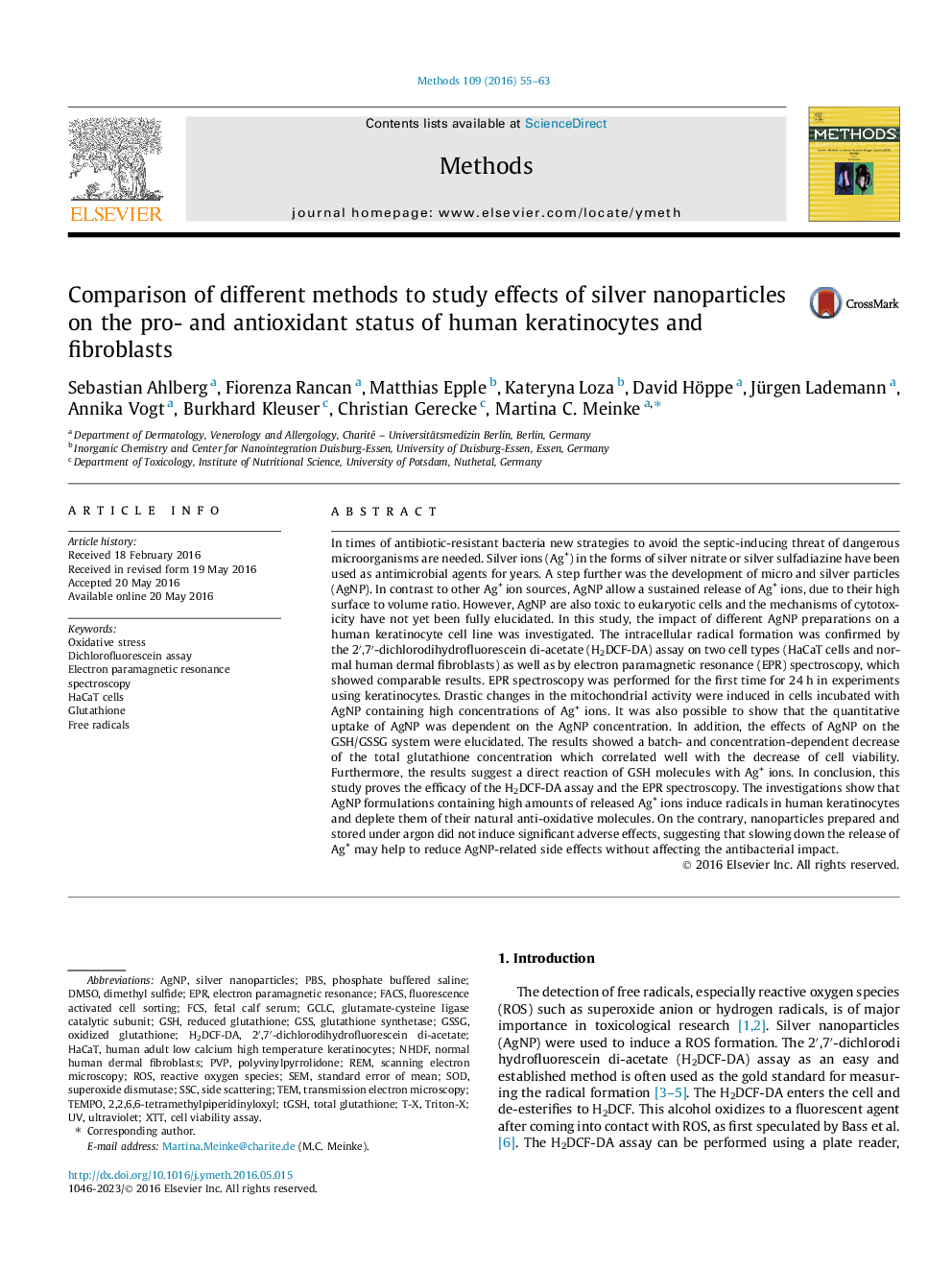| کد مقاله | کد نشریه | سال انتشار | مقاله انگلیسی | نسخه تمام متن |
|---|---|---|---|---|
| 5513675 | 1541217 | 2016 | 9 صفحه PDF | دانلود رایگان |
Highlight
- First comparison of EPR spectroscopy and H2DCF-DA assay on human keratinocytes.
In times of antibiotic-resistant bacteria new strategies to avoid the septic-inducing threat of dangerous microorganisms are needed. Silver ions (Ag+) in the forms of silver nitrate or silver sulfadiazine have been used as antimicrobial agents for years. A step further was the development of micro and silver particles (AgNP). In contrast to other Ag+ ion sources, AgNP allow a sustained release of Ag+ ions, due to their high surface to volume ratio. However, AgNP are also toxic to eukaryotic cells and the mechanisms of cytotoxicity have not yet been fully elucidated. In this study, the impact of different AgNP preparations on a human keratinocyte cell line was investigated. The intracellular radical formation was confirmed by the 2â²,7â²-dichlorodihydrofluorescein di-acetate (H2DCF-DA) assay on two cell types (HaCaT cells and normal human dermal fibroblasts) as well as by electron paramagnetic resonance (EPR) spectroscopy, which showed comparable results. EPR spectroscopy was performed for the first time for 24Â h in experiments using keratinocytes. Drastic changes in the mitochondrial activity were induced in cells incubated with AgNP containing high concentrations of Ag+ ions. It was also possible to show that the quantitative uptake of AgNP was dependent on the AgNP concentration. In addition, the effects of AgNP on the GSH/GSSG system were elucidated. The results showed a batch- and concentration-dependent decrease of the total glutathione concentration which correlated well with the decrease of cell viability. Furthermore, the results suggest a direct reaction of GSH molecules with Ag+ ions. In conclusion, this study proves the efficacy of the H2DCF-DA assay and the EPR spectroscopy. The investigations show that AgNP formulations containing high amounts of released Ag+ ions induce radicals in human keratinocytes and deplete them of their natural anti-oxidative molecules. On the contrary, nanoparticles prepared and stored under argon did not induce significant adverse effects, suggesting that slowing down the release of Ag+ may help to reduce AgNP-related side effects without affecting the antibacterial impact.
Journal: Methods - Volume 109, 15 October 2016, Pages 55-63
